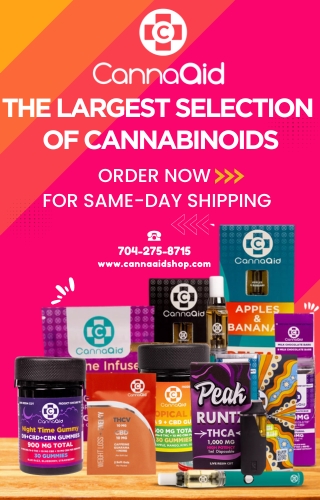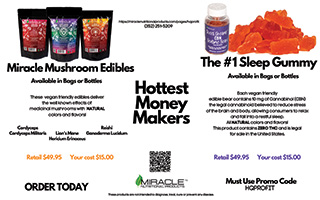Retailers who will excel this holiday season are those who choose to do things differently — especially in the face of potential supply chain disruptions. As a retailer, you’ll want to be prepared for shoppers who are buying earlier this year. To do so, you need to manage your inventory properly to avoid lost sales opportunities and frustrated customers.
Learn how to meet your customers’ demands and maintain their loyalty throughout the holiday season — and beyond — with this retailer holiday buying guide.
Why You Should Plan Early for Holiday Orders
Retailers could find themselves dealing with shipping delays caused by global supply chain problems. On top of that, more consumers will likely be starting their holiday shopping earlier this year. According to Salesforce, 37% more shoppers in the U.S. and 42% more worldwide plan to buy gifts earlier in order to get better deals.
If you’re not fully prepared by the time the holiday season kicks in, you could find it difficult to fill your shelves with merchandise. Be prepared and stock early to ensure that your customers get the holiday items they need.
Remember, by the time Black Friday ends, you should have moved most of your inventory.
What Products to Focus On
During the holidays, the demand increases for many products across various industries. Based on previous holiday seasons and current consumer trends within the counterculture industry, these are some of the more in-demand products:
- Alternative Lifestyle
- Apparel
- Bath & Body Products (bath bombs, creams, lotions, oils, etc.)
- Disposable Vapes (THC, CBD, D8)
- Candles & Odor Sprays
- Counterculture Inpsired Games
- Storage (Boxes, Safes, Bags, and Backpacks)
- Tapestries & Posters
- Incense & Burners
- Glass
- Greeting Cards
- Patches & Stickers
- Dab Tools & Accessories
- Edibles
You should also focus on any products you’ve found to be hot sellers at your store during past holiday seasons. On top of these products, consider offering gift bundles, themed products, and free gifts with purchase.
Gift Bundles
Personalized gift bundles can significantly boost your sales this holiday season. Just gather similar products into one package and sell the bundle at a discount. For example, you could have a gift bundle that includes three compatible items instead of selling each product at individual prices. You could also throw in a free product, either alongside the bundle or as its own incentive.
Holiday-themed Products
Consumers love to buy products that promote the festive spirit. Consider adding some holiday themes to your products. This could be as simple as selling apparel alongside a Santa hat or patches/stickers referencing the holidays. The possibilities are endless.
Gifts with Purchase
Everyone loves free gifts. Offer a gift with purchase and see the sales roll in. The gift doesn’t have to be complicated but should make sense alongside your products. For example, throw in free incense sticks or branded stickers to anyone who spends at least $10; if you sell a heady glass piece, add a free bottle of pipe cleaner to the order.
How To Stay Within Your Budget
Before making your holiday orders, you’ll need to determine your budget. Start by analyzing your past sales data. Track your holiday expenses and profit from last year and previous years, if applicable. This will give you a good idea of how much you can spend on expenses this year.
Also, consider the factors that influenced sales during the previous holiday. Which products sold well and which ones struggled to leave your shelves? What more could you have done to improve or prevent those outcomes?
Keep in mind that the prices of goods this holiday may be higher than in previous seasons. Be prepared to possibly increase your budget a bit to ensure there is enough stock for your customers.
What To Consider When Making Large Pre-Holiday Purchases
The best time to start holiday ordering for most retailers is in September, if not sooner. Being ahead of your purchases means you won’t miss out on in-demand items.
Additionally, consider when to start rolling out your holiday displays and promotions — you may want to start a little earlier this year. Last year, major retailers, such as Target, Amazon, and Best Buy, began their holiday promotions mid-September. Similar trends are expected this year. Think about how you can leverage your promotions to benefit your bottom line for an extended period of time.
Take advantage of peak shopping periods and retail holidays like Black Friday, Cyber Monday, and Small Business Saturday, and don’t forget about these holidays as well:
- Halloween (October 31)
- Super Saturday (December 17)
- Christmas Eve (December 24)
- New Year’s Eve (December 31)
Marketability
Know your customers and understand their buying patterns, especially around the holidays. What went fast last year? Are those products likely to do well this year as well, or have trends changed?
Don’t forget about your competition as well. Who else in your area is dealing in the same products and how can you differentiate your store from theirs?
How To Avoid Over/Under Buying
When it comes to managing your inventory levels, you can’t afford to rely on guesswork. Buying excess inventory means you might be stuck with leftovers once the holidays are over. However, if you end up not buying enough, you’ll risk disappointing your customers and losing out on sales.
To determine the right amount of inventory, start by looking at your historical data if your business has been operating for at least a year. What was the stock like last year? How long did it last? Did you satisfy your customers’ demands?
Answering these questions truthfully will give you a rough idea of the amount of inventory you might need this year. But don’t stop there. Consider the current market demands and trends and what those might mean for your sales.
How To Work With Vendors To Get the Best Prices
Strong relationships are critical for business success — and that often starts with your supplier or manufacturer. Most suppliers and manufacturers operate using minimum order quantities (MOQ). This is the minimum amount of products they will sell to you at any one time. MOQs allow you to enjoy the best possible price per unit.
If your supplier’s MOQ differs from the amount of products you want to buy, try to negotiate for a better deal. The manufacturer could have higher pricing but compensate with favorable shipping fees, warranties, discounts, and more. These negotiations can help enhance your relationship with the supplier, which may lead to better offers for you in the future.












